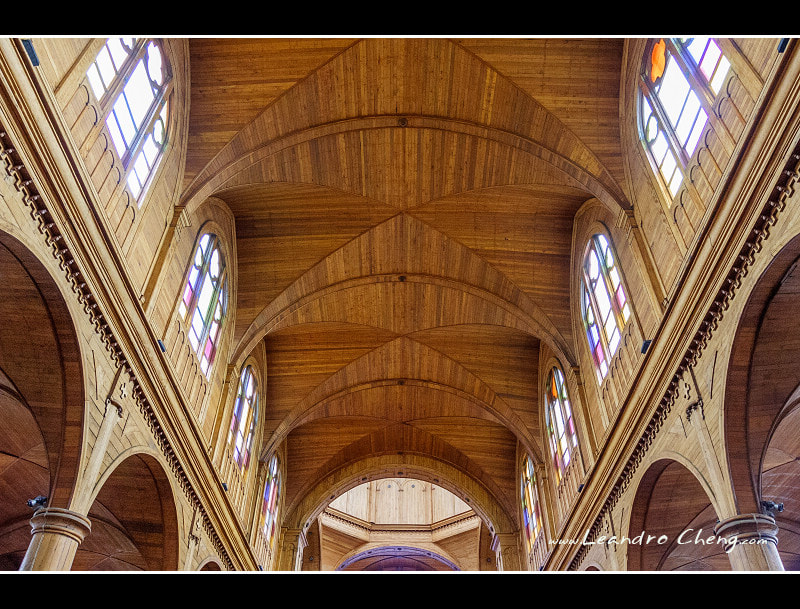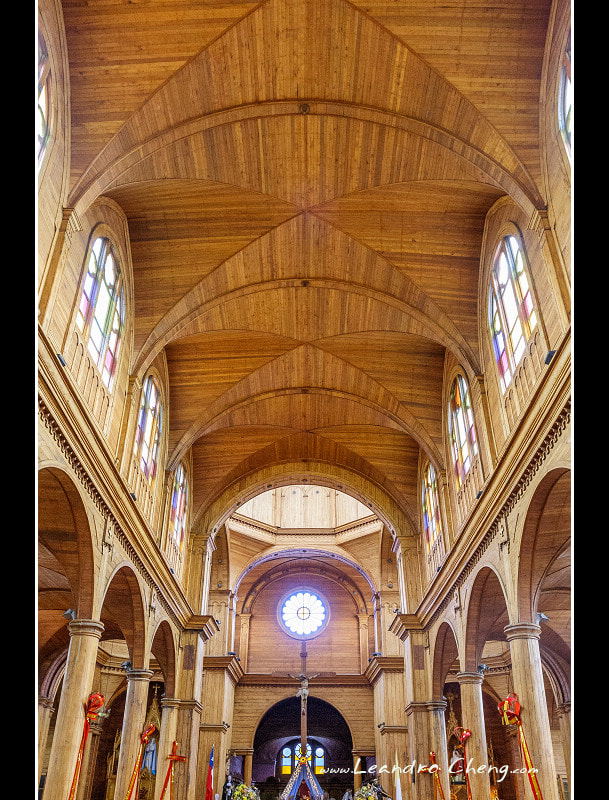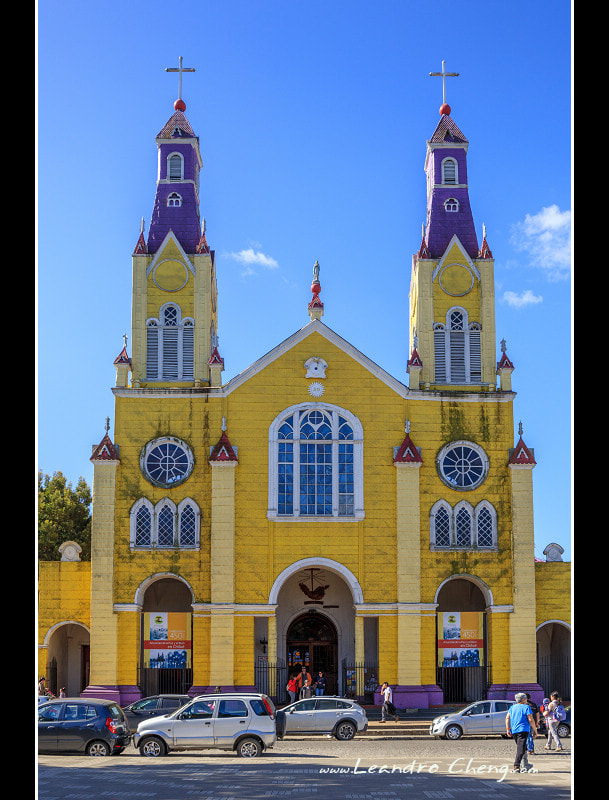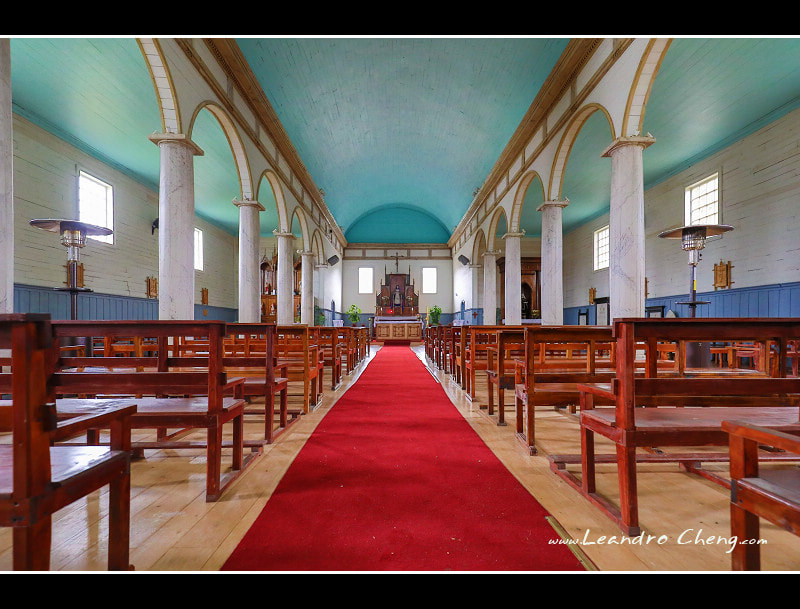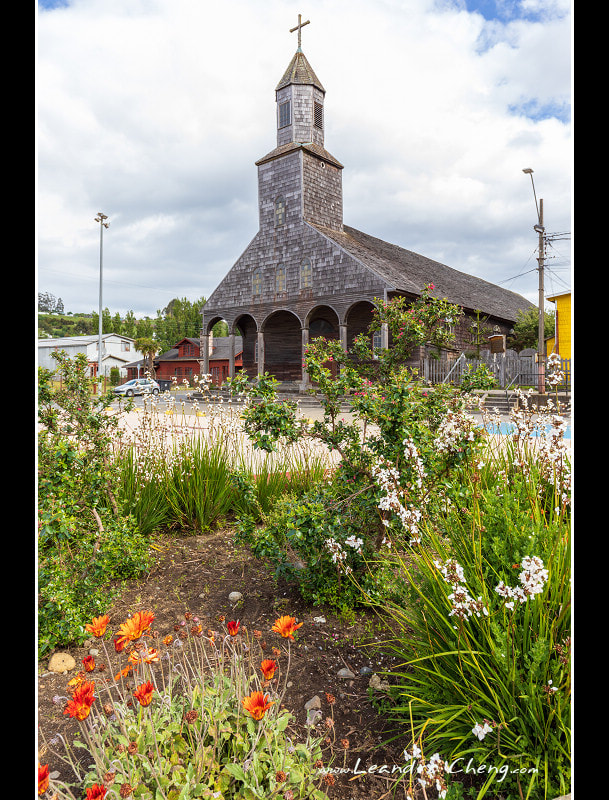此教堂群的最大建築物卡斯特羅大教堂, 在2000年被聯合國教科文組織列為世界遺產的一員, 編號: 971.
智利Isla Chiloé島中部的城市Castro,市中心有個非常有特色的大教堂,全部的建材都是木頭。
教堂的正式名稱為: La Catedral de San Francisco de Castro, 1979年7月19日被智利政府宣布為的國家級古蹟(Monumento Histórico Nacional)員.
教堂的寬度為27公尺, 長度為52公尺, 面積為1404平方公尺, 高度為42公尺.
詳細的資料請參考: Church of San Francisco, Castro
維基百科對Isla Chiloé木頭教堂的說明:
奇洛埃木製教堂群建造於智利奇洛埃島上的木質教堂群. 此教堂群建於18世紀和19世紀之間. 現在, 此教堂群已有159間教堂被修復保存.
此教堂群是由耶穌會所建造的, 其建築特點是混合當地的的奇洛埃風格以及歐洲的哥德式和巴洛克式的建築風格.
奇洛埃風格被認為是一種在世界上十分獨特的建築風格.
The Churches of Chiloé in Chile's Chiloé Archipelago are a unique architectural phenomenon in the Americas, and one of the most prominent styles of Chilota architecture. Unlike classical Spanish colonial architecture, the churches of Chiloé are made entirely in native timber with extensive use of wood shingles. The churches were built from materials to resist the Chiloé Archipelago's humid and rainy oceanic climate.
Built in the 18th and 19th centuries when Chiloé Archipelago was still a part of the Spanish Crown possessions, the churches represent the fusion of Spanish Jesuit culture and local native population's skill and traditions; an excellent example of mestizo culture.
The Churches of Chiloé were designated UNESCO World Heritage Sites since 2000. The University of Chile, Fundación Cultural Iglesias de Chiloé and other institutions have led efforts to preserve these historic structures and to publicize them for their unique qualities
延伸閱讀:
推薦路線: Patagonia (阿根廷及智利的南部)
推薦路線: 玻利維亞
推薦路線: 祕魯
推薦路線: 古巴
推薦路線: 伊瓜蘇瀑布
推薦路線: 阿根廷西北高原區
推薦路線: 智利南方公路 (大理石教堂)
推薦路線: 智利Isla Chiloé島
推薦路線: 智利 San Pedro de Atacama
推薦路線: 哥倫比亞
推薦路線: 阿根廷的生態攝影
推薦路線: 世界遺產
帶團拍攝作品:
2013-04: 阿根廷三大國家公園 (冰川國家公園, 伊瓜蘇國家公園, 火地島國家公園)
2015-03: 阿根廷西北高原區
2015-06: 阿根廷西北高原區 + 布宜諾斯艾利斯
2015-12: 12000公里長征 (阿根廷 / 智利 / 巴西)
2016-02: 玻利維亞 + 阿根廷西北高原區 + 布宜諾斯艾利斯
2016-03: 古巴
2016-11: Patagonia + 布宜諾斯艾利斯
2016-12: 古巴
2017-01: 南美六國 (阿根廷 / 烏拉圭 / 巴西 / 玻利維亞 / 哥倫比亞 / 智利)
2017-02: 祕魯 + 玻利維亞 + 智利
2017-03: 祕魯 + 玻利維亞 + 智利 + Patagonia
2017-04: Patagonia + 大理石教堂
2017-05: 伊瓜蘇 + Patagonia
2017-06: 伊瓜蘇 + Patagonia
2017-11: 智利大理石教堂 + Isla Chiloé島 + Frutillar + Valparaíso
2018-01: 智利 祕魯 玻利維亞
2018-01 & 02: 祕魯 玻利維亞
2018-02: 祕魯 玻利維亞 智利
2018-03 & 04: Patagonia + Valparaíso
2018-05 Patagonia
2018-05 & 06 Patagonia + 伊瓜蘇瀑布
2018-09 智利 百內國家公園
2018-11 & 12 智利南方公路 + 大理石教堂 + Isla Chiloé島 + Frutillar + Valparaíso
2019-01 智利南方公路 + San Pedro de Atacama + 玻利維亞
2019-02 & 03 祕魯 + 玻利維亞 + 哥倫比亞
2019-03 玻利維亞 + 智利
2019-04 Patagonia
2019-04 Patagonia + 大理石教堂 + 伊瓜蘇瀑布
2019-05 智利 百內 + Isla Chiloé島 + Frutillar + 大理石教堂
2019-08 Patagonia + 伊瓜蘇瀑布
2019-10 & 11 車隊自駕南美七國53天
2019-12 祕魯 + 玻利維亞
2020-02 & 03 古巴



